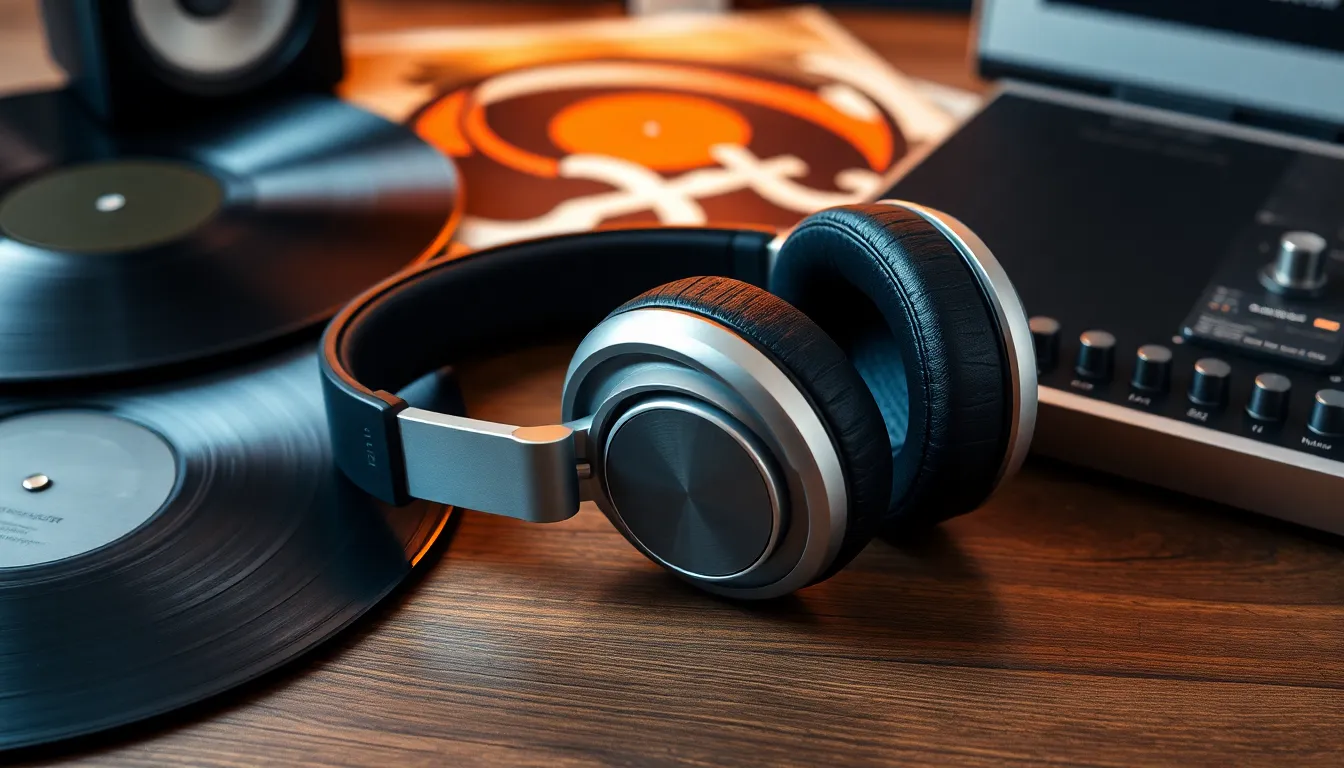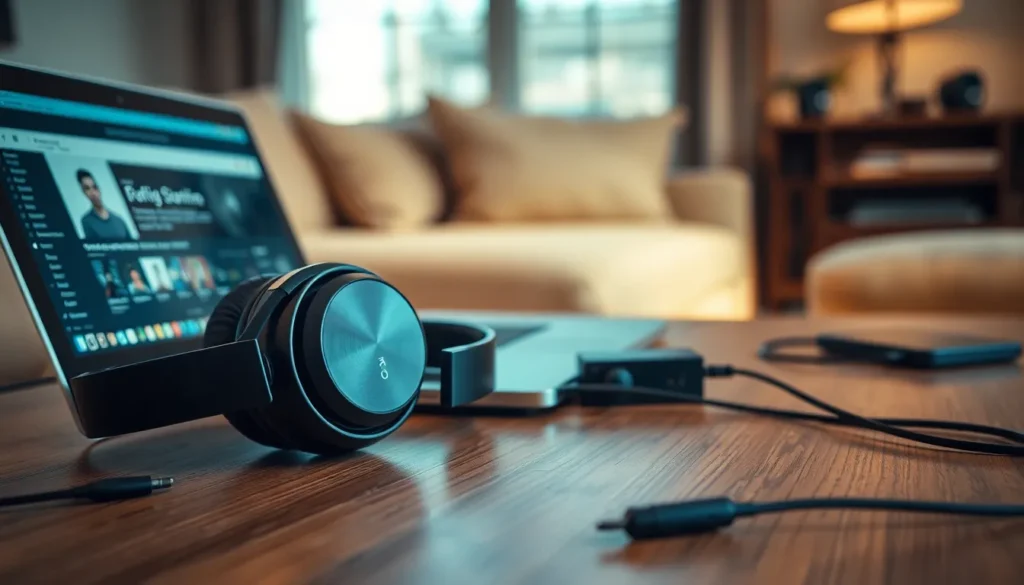Table of Contents
ToggleIn a world where audio quality often takes a backseat to convenience, lossless audio emerges as the superhero we didn’t know we needed. Imagine savoring your favorite tunes with every note intact, like a perfectly cooked steak instead of a sad, overcooked veggie burger. Lossless audio captures the full spectrum of sound, ensuring that every whisper and crescendo hits your ears just as the artist intended.
What Is Lossless Audio?
Lossless audio refers to a method of audio compression that preserves the complete quality of the original recording. Unlike lossy formats, such as MP3, lossless audio keeps all the data intact, ensuring richer, fuller sound. Popular lossless audio formats include FLAC, ALAC, and WAV, which all maintain the fidelity of the original performance.
Listening to lossless audio allows the listener to experience the nuances of music, from the subtle harmonies to the intricate melodies. This format captures the full dynamic range, resulting in sound that faithfully represents the artist’s intentions. Noteworthy is that lossless files can be significantly larger in size compared to lossy files, often requiring more storage space.
Many audiophiles and music enthusiasts prefer lossless audio for its unparalleled clarity. Streaming services such as Tidal and Qobuz offer lossless audio options, catering to this audience. Users seeking high-quality sound appreciate that lossless audio can enhance their listening experience through more detailed and vibrant soundscapes.
Ultimately, investing in lossless audio equipment, such as high-end headphones and DACs, further elevates the listening experience. Those serious about music often prioritize high-resolution audio files, ensuring every note translates beautifully. Lossless audio represents a commitment to sound quality that resonates with dedicated listeners.
Benefits of Lossless Audio

Lossless audio offers several significant advantages that elevate the listening experience. With its capacity to preserve superior sound quality, it stands out among audio formats.
Improved Audio Quality
Lossless audio formats retain the full fidelity of the original recording. Music enthusiasts hear each detail, from subtle nuances to powerful dynamics. Listening to a lossless track reveals an expansive sound stage, enhancing clarity and depth compared to lossy formats. Frequencies that might be lost in compression are clearly rendered, providing a richer sound experience. Audiophiles often prefer lossless audio due to its ability to faithfully reproduce complex arrangements. High-resolution files maintain more audio information, making them ideal for critical listening.
Enhanced Listening Experience
The emotional connection to music deepens through lossless audio clarity. Listeners experience a more immersive sound environment, allowing for appreciation of every instrument and vocal detail. High-quality playback creates a sense of presence, akin to being in the recording studio. Artists’ intentions shine through, offering a more authentic musical experience. Engaging with music via lossless formats transforms casual listening into an auditory journey. Streaming services that prioritize lossless options cater to this desire for enriched sound quality. Investing in quality headphones or audio equipment amplifies these benefits, making every listen special.
Popular Lossless Audio Formats
Several formats allow users to enjoy the richness of lossless audio. Three of the most popular formats are FLAC, ALAC, and WAV.
FLAC
FLAC stands for Free Lossless Audio Codec. This format offers compression without sacrificing audio quality, making it a favorite among audiophiles. Files encoded in FLAC maintain the original sound quality while reducing file size by about 30 to 60 percent compared to WAV. Supported by many devices and software, FLAC fits seamlessly into various listening environments. It also features tag support, which helps organize music accurately. Audiophiles appreciate how FLAC preserves the dynamic range and complexity of recordings. Many streaming services and music platforms provide FLAC as an option for high-fidelity listening.
ALAC
ALAC, or Apple Lossless Audio Codec, serves a similar purpose to FLAC but is optimized for Apple devices. It compresses audio files without losing quality, providing an effective solution for Apple users. ALAC files maintain the original sound quality, allowing for the full representation of recordings. Additionally, ALAC is integrated into Apple’s ecosystem, making it a convenient choice for users of iTunes and Apple Music. It supports various metadata formats and ensures seamless playback on multiple devices. Just like FLAC, ALAC preserves the nuances and depth of musical recordings.
WAV
WAV, which stands for Waveform Audio File Format, is widely recognized for its simplicity and high quality. This format provides uncompressed audio files, resulting in larger file sizes that capture every detail of the sound. WAV retains all the information from the original recording, making it ideal for professional audio editing and archiving. While its size can be a drawback for casual listening, many studios and sound engineers prefer WAV for its fidelity. Compatibility with nearly all audio players enhances its appeal. Users seeking the highest quality audio often favor WAV for critical listening scenarios.
How to Play Lossless Audio
Listening to lossless audio requires compatible software and hardware to capture its full potential. This technology ensures a superior musical experience, connecting listeners with their favorite tracks.
Required Software and Hardware
Necessary software includes media players that support lossless formats. VLC Media Player, Foobar2000, and Audirvana are excellent options for this purpose. Hardware also plays a crucial role; quality digital-to-analog converters (DACs) are essential for converting digital files to analog signals. An advanced DAC, like the AudioQuest DragonFly or the Schiit Modi, will significantly enhance sound reproduction. Dedicated apps, such as Tidal and Qobuz, provide access to lossless streaming, ensuring seamless playback.
Best Devices for Lossless Audio Playback
Choosing the right devices enhances the lossless audio experience. High-definition audio players, like the Astell & Kern A&norma SR25, are optimized for playback. Similarly, investing in premium headphones or earbuds, such as the Sennheiser HD800S or the Sony WH-1000XM4, will reveal intricate sound details. Smartphone options that support lossless formats, such as the iPhone and select Android models, also meet the needs of audiophiles. Pairing these devices with high-quality speakers, like the KEF LS50 Wireless II, further amplifies enjoyment and authenticity in sound.
Lossless audio stands as a testament to the commitment to sound quality that resonates deeply with music lovers. By preserving the full fidelity of recordings it transforms the listening experience into something truly immersive. For those who value every nuance and detail in music lossless formats like FLAC, ALAC, and WAV offer unparalleled clarity.
With the right equipment and streaming services dedicated to lossless options anyone can elevate their auditory journey. Embracing lossless audio isn’t just about better sound; it’s about forging a deeper emotional connection with music that transcends the ordinary. As technology continues to evolve the appreciation for lossless audio will only grow, inviting more listeners to experience the richness it has to offer.

